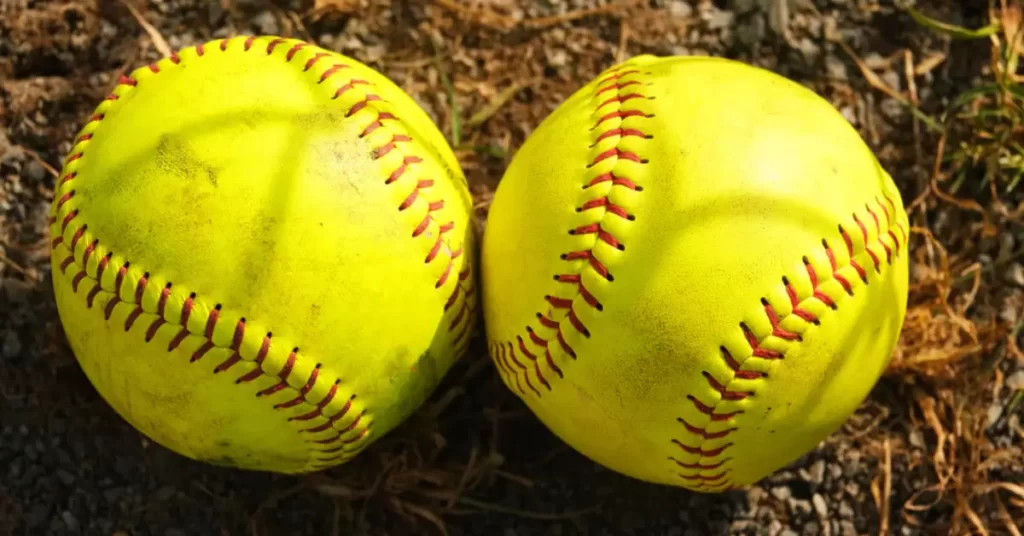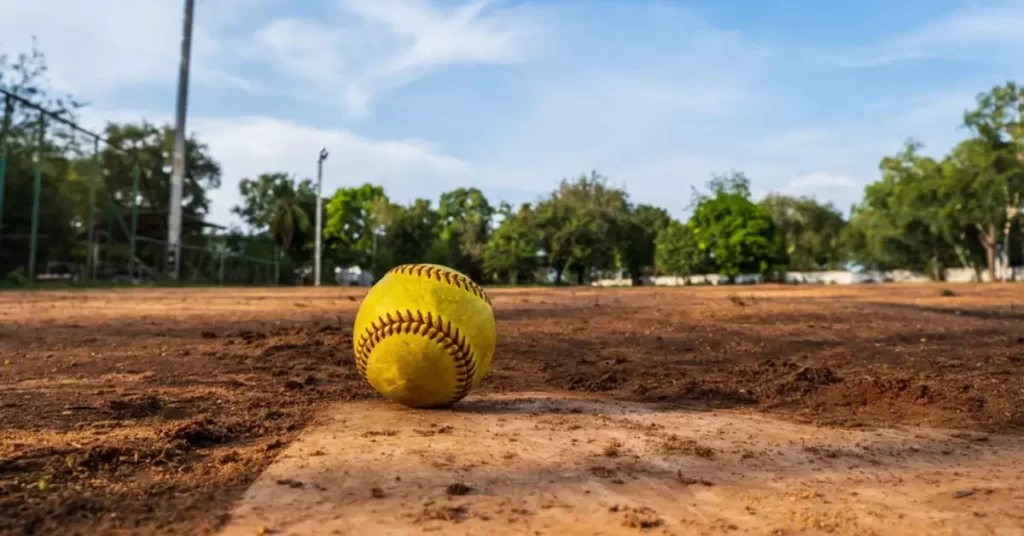Unraveling the mystique of a softball’s color might seem trivial at first glance. However, understanding the reasoning behind its hue adds a new dimension to this popular sport. The color choice, in fact, serves a specific purpose that goes beyond mere aesthetics.
Traditionally, softballs possess a bright yellow hue, which is easily visible to players during the game. This distinct color not only aids in tracking the ball’s trajectory but also enhances safety measures on the field.
Delve deeper into the fascinating world of softball colors and discover why this vibrant shade dominates the sport. Uncover the history, science, and significance of this seemingly simple yet intriguing aspect of the game.
A Brief History of Softball
Origin of the sport
Softball was invented in 1887 by George Hancock, who wanted to create an indoor version of baseball. The first game took place in a Chicago gymnasium with a boxing glove serving as the ball.
The sport quickly gained popularity and spread throughout the United States, eventually making its way outdoors.
Evolution of the softball
The earliest softballs were often white, much like their baseball counterparts. However, as the sport evolved and regulations were established, the color of the softball changed as well.
Today, the official color of a softball is optic yellow.

Understanding Softball Colors
Official color
The official color for softballs, as established by the International Softball Federation (ISF) and the Amateur Softball Association (ASA), is optic yellow.
This bright, fluorescent hue is used for both fastpitch and slowpitch softballs.
Why yellow is the preferred color
Optic yellow was chosen as the official color of softballs for a few reasons. Firstly, the bright hue makes the ball easier to see, especially against the backdrop of the field or sky.
This improved visibility benefits both the players and the spectators. Secondly, research has shown that the human eye is more sensitive to yellow, making it an ideal choice for a sport that relies heavily on quick visual tracking.
Variations in color
While optic yellow is the standard, there are other colors used for softballs, such as white or pink.
White softballs are often used in recreational leagues or for practice, while pink softballs are typically used for special events or fundraisers to raise awareness for causes like breast cancer.
Comparing Fastpitch and Slowpitch Softballs
Differences in size and color
Both fastpitch and slowpitch softballs are typically optic yellow. However, there are some differences in size. Fastpitch softballs usually have a circumference of 12 inches, while slowpitch softballs can vary from 11 to 16 inches in circumference.
Materials Used in Softball Manufacturing
Core materials
The core of a softball is typically made of polyurethane, cork, or a combination of the two. Polyurethane cores are generally softer and more durable, while cork cores are lighter and offer better bounce characteristics.
Cover materials
The outer cover of a softball can be made from a variety of materials, including leather, synthetic leather, or plastic.
Leather covers are preferred by many players for their durability and better grip, while synthetic leather offers a more budget-friendly option that still provides a good feel.
Plastic covers are typically found on cheaper softballs used for practice or recreational play.

Choosing the Right Softball for Your Needs
Age and skill level
When selecting a softball, it’s essential to consider the age and skill level of the players. Youth leagues often use smaller, lighter balls to accommodate developing skills and physical abilities.
As players progress to higher levels of play, they will transition to the standard 12-inch, optic yellow softballs.
Types of play
Different types of play may require specific softballs. For example, indoor practice may call for softer, reduced-impact balls, while outdoor games often use regulation softballs.
Always check with your league or organization to ensure you’re using the appropriate ball for your situation.
Proper Softball Care and Maintenance
Storage tips
To maintain the quality and longevity of your softballs, store them in a cool, dry place away from direct sunlight. Excessive heat, cold, or moisture can damage the ball’s core and cover, affecting its performance.
Cleaning recommendations
Regularly cleaning your softballs will help preserve their appearance and performance. Use a mild soap and warm water to remove dirt and debris, then allow them to air dry completely before storing.
The Impact of Softball Color on Performance
Visibility
As mentioned earlier, the optic yellow color of softballs significantly improves visibility for both players and spectators.
This enhanced visibility allows for better tracking of the ball during play, reducing the likelihood of errors and enhancing overall game performance.
Psychological effects
The bright, vibrant color of the optic yellow softball can also have a psychological impact on players.
It can instill a sense of energy and excitement, helping to keep players engaged and focused throughout the game.
Popular Softball Brands and Models
Leading brands
Some of the most popular brands for softballs include Wilson, Rawlings, Dudley, and Worth. These brands are known for producing high-quality, reliable softballs used by players at all levels of the sport.
Features and benefits
Each brand and model of softball may offer unique features and benefits, such as varying core materials, cover materials, or compression ratings.
When selecting a softball, consider these factors and choose the one that best suits your needs and preferences.
FAQs
Why are softballs not actually soft?
Despite their name, softballs are not soft. They are called “softballs” because they are larger and have a softer core compared to baseballs, making them somewhat easier to catch and throw.
Can I use a white softball in an official game?
Most official games and leagues require the use of optic yellow softballs. However, some recreational leagues may still use white softballs, so it’s best to check with your specific league or organization for their requirements.
How often should I replace my softballs?
The lifespan of a softball depends on its usage and how well it’s maintained. Regular inspection for signs of wear, such as cracking or significant discoloration, can help determine when it’s time for a replacement.
Final Verdict
Now that you have explored the significance of a softball’s color, you can appreciate the impact of this distinct hue. The bright yellow not only ensures visibility but also contributes to the safety and excitement of the game.
Next time you find yourself watching or participating in a softball match, take a moment to appreciate the thoughtfulness behind this color choice. Let the vibrant yellow serve as a reminder of the intricacies and nuances that make the game of softball truly engaging and enjoyable.
